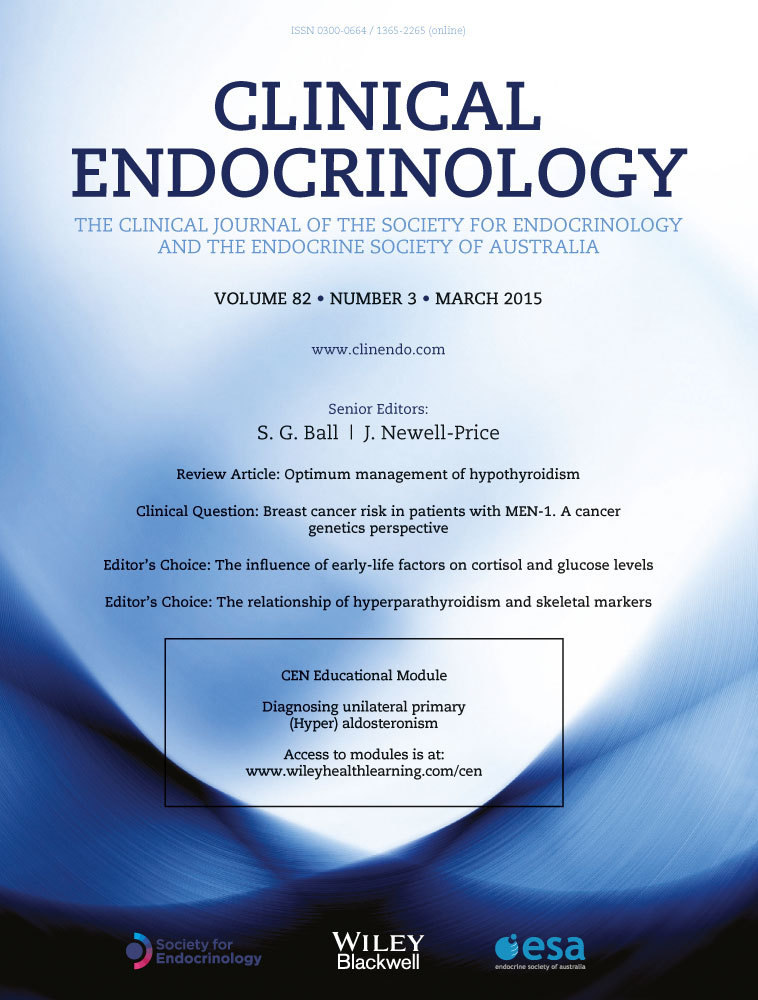Cortical bone mineral density in patients with congenital adrenal hyperplasia due to 21-hydroxylase deficiency
Summary
Background
Prior studies reveal that bone mineral density (BMD) in congenital adrenal hyperplasia (CAH) is mostly in the osteopaenic range and is associated with lifetime glucocorticoid dose. The forearm, a measure of cortical bone density, has not been evaluated.
Objective
We aimed to evaluate BMD at various sites, including the forearm, and the factors associated with low BMD in CAH patients.
Methods
Eighty CAH adults (47 classic, 33 nonclassic) underwent dual-energy-x-ray absorptiometry and laboratory and clinical evaluation. BMD Z-scores at the AP spine, total hip, femoral neck, forearm and whole body were examined in relation to phenotype, body mass index, current glucocorticoid dose, average 5-year glucocorticoid dose, vitamin D, 17-hydroxyprogesterone, androstenedione, testosterone, dehydroepiandrosterone and dehydroepiandrosterone sulphate (DHEAS).
Results
Reduced BMD (T-score <−1 at hip, spine, or forearm) was present in 52% and was more common in classic than nonclassic patients (P = 0·005), with the greatest difference observed at the forearm (P = 0·01). Patients with classic compared to nonclassic CAH, had higher 17-hydroxyprogesterone (P = 0·005), lower DHEAS (P = 0·0002) and higher non-traumatic fracture rate (P = 0·0005). In a multivariate analysis after adjusting for age, gender, height standard deviation, phenotype and cumulative glucocorticoid exposure, higher DHEAS was independently associated with higher BMD at the spine, radius and whole body.
Conclusion
Classic CAH patients have lower BMD than nonclassic patients, with the most affected area being the forearm. This first study of forearm BMD in CAH patients suggests that low DHEAS may be associated with weak cortical bone independent of glucocorticoid exposure.




